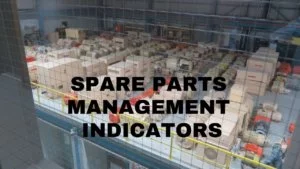The definition of Spare Parts Classification can fluctuate depending on the vision and/or focus assumed at any given moment.
Some examples of definitions:
• Part criticality
• Parts grouping or commodity
• Part Type
At IDCON INC we have a definition of spare parts classification as follow:
- What type of spare is it when it sits on the shelves?
- Does it influence the plant performance?
- Is it hard to find?
Looking at it from this perspective, we have classified spare parts as follow:
• Critical – We can’t live (or sleep) without it.
• Insurance – Yes, let’s have it in case of…
• Low Risk – No problem (I can still sleep) if we need it now
• Non-Stock – We will pick it up tomorrow
In order to define a part with these classifications, asking simple questions can give us a type of approach that can be objective. They are usually answered by a skilled craftsperson, supervisor, store room attendant, craft leads or reliability engineer (sorry, purchasing agents usually are not the best resource).
In an existing inventory, we will have the parts transaction data (good issues, parts used) available that will support us in this effort. When new equipment is purchased, these questions can be supplied to the equipment manufacturer (NOT vendor) for their input (I strongly suggest a review by the plant).
The following is a list of the questions:
| Item or Question | Definition | Comments |
| Predictability of failure | Consistent repetition of failure, making it possible to know in advance that it is going to fail |
|
| Probability of Failure | A strong likelihood or chance (Risk?) of something. |
|
| Time from failure to “real” production loss | From the time it fails to when production STOPS or product quality is affected | Things to consider:
|
| Consequences of not having the part when needed | The effect, result, or outcome of something occurring |
|
| Disassemble time (before installing the part) | Time needed to take apart an assembly or section in order to reach and change the part |
|
| Part preparation time | Time needed to get the part ready |
|
| Can we repair and return to inventory | Yes or No |
|
| Availability of substitutes or replacements | Are parts available that can substitute or replace WITHOUT modifications or specs. Change? |
|
In our next tip, we will look at assigning values to these questions and making some sense into the Spare Parts classification process.





